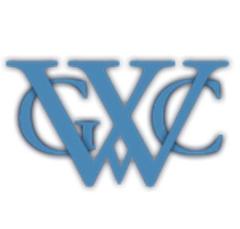Dutch Records: Dutch Records: Researching New York's Dutch Heritage

About the Objects
The New York State Archives holds the surviving records of the Dutch colony of New Netherland, which encompassed the earliest European settlements that became the states of New York, New Jersey, Pennsylvania, and Delaware. These 17th-century records concern the full range of government functions including relations with native inhabitants, particularly the Mohawks, Mahicans, and various groups around New Amsterdam and the Delaware River. The records also play a critical role in documenting the ascension of the Netherlands to its status as the premier trading nation of the world during the seventeenth century.
The New York State Archives holds the surviving records of the Dutch colony of New Netherland, which encompassed the earliest European settlements that became the states of New York, New Jersey, Pennsylvania, and Delaware. These 17th-century records concern the full range of government functions including relations with native inhabitants, particularly the Mohawks, Mahicans, and various groups around New Amsterdam and the Delaware River. The records also play a critical role in documenting the ascension of the Netherlands to its status as the premier trading nation of the world during the seventeenth century.
Overview
Until now, access to the records could be challenging, particularly online.
The New Netherland Institute (NNI) provided access to digitized copies of translations prepared by NNI staff. Using those files, the New York State Archives produced document-level versions of the available translations, which can be viewed in the context of each digitized document.
Images and descriptions of all of the original documents, and translations of most of them are now available online through the New York State Archives Digital Collections, where researchers can browse or search records and download high resolution TIFFs. From the Digital Collections, researchers can link to our online Encoded Archival Description (EAD) Finding Aids, allowing them to browse document descriptions and link directly to digitized versions.
The Society of Daughters of Holland Dames provided essential support to the project by funding the project archivist, who was responsible for working with project partners, preparing the images, and and insuring quality control throughout the project.
Until now, access to the records could be challenging, particularly online.
- The records are physically fragile owing to their age, early water damage, and fire damage sustained in 1911.
- Most records are written in Dutch in pre-modern handwriting of various styles.
- Published English translations are available for many but not all of the records, and not all of the translations are available online.
- The translations are only selectively indexed.
The New Netherland Institute (NNI) provided access to digitized copies of translations prepared by NNI staff. Using those files, the New York State Archives produced document-level versions of the available translations, which can be viewed in the context of each digitized document.
Images and descriptions of all of the original documents, and translations of most of them are now available online through the New York State Archives Digital Collections, where researchers can browse or search records and download high resolution TIFFs. From the Digital Collections, researchers can link to our online Encoded Archival Description (EAD) Finding Aids, allowing them to browse document descriptions and link directly to digitized versions.
The Society of Daughters of Holland Dames provided essential support to the project by funding the project archivist, who was responsible for working with project partners, preparing the images, and and insuring quality control throughout the project.
Related Resources
New Netherland Institute
New York City Municipal Archives
New York Heritage Digital Collections, Archives of the Holland Land Company
New York State Library, Manuscripts and Special Collections
Ulster County Clerk, Archives Division
New Netherland Institute
New York City Municipal Archives
New York Heritage Digital Collections, Archives of the Holland Land Company
New York State Library, Manuscripts and Special Collections
Ulster County Clerk, Archives Division
Related Series
New Netherland Provincial Secretary register of the Provincial SecretaryNew Netherland Council writs of appeal
New Netherland Council Dutch colonial patents and deeds
New Netherland Council Dutch colonial ordinances
New Netherland Council Dutch colonial land deeds
New Netherland Council Curacao records
Fort Orange settlement administrative records
Dutch Delaware River settlement administrative records
Dutch colonial council minutes
Dutch colonial administrative records
Dutch colonial administrative correspondence
British Delaware River settlement administrative records


